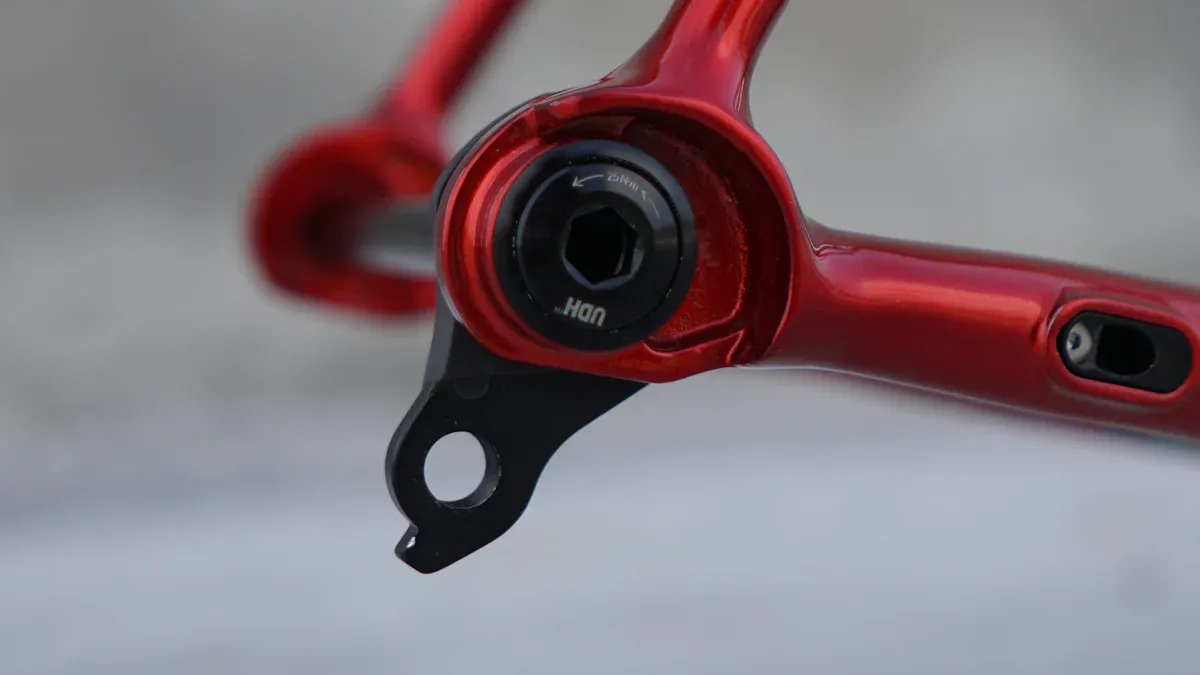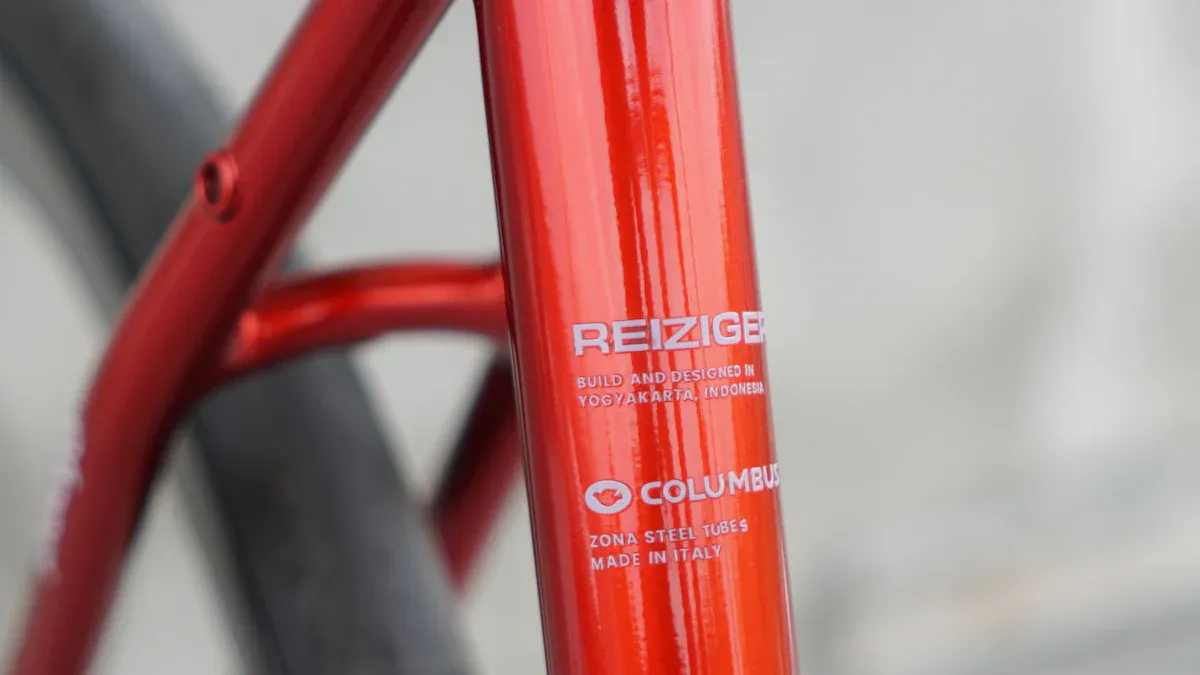
When you choose between a titanium vs steel bike frame, you consider more than just aesthetics. The material of your bike frame significantly influences your riding experience. Each material possesses unique characteristics that impact weight, strength, and comfort. For instance, titanium frames are exceptionally strong and effectively absorb bumps, making them a preferred choice for long-distance cyclists. On the other hand, steel frames are recognized for their durability and affordability. In this blog, you will discover how these factors affect your ride quality, durability, and overall satisfaction.
Key Takeaways
Titanium frames are light and strong. They are great for long rides.
Steel frames are very comfortable and last a long time. They are good for casual riders and touring.
Think about how much care you want to give: titanium does not rust and needs less care than steel.
Look at your budget: steel frames usually cost less at first. Titanium gives good value over time.
Pick based on how you ride: choose titanium for speed and quickness. Choose steel for comfort and steadiness.
Material Comparison

Strength and Weight
When you look at the strength and weight of titanium vs steel bike frames, there are big differences. These differences can change how you ride. Titanium frames usually have a strength-to-weight ratio that is hard to match. For example, titanium alloys like the 3/2.5 alloy have a tensile strength between 100 to 130 KSI. This means they can handle a lot of force without bending or breaking. Steel’s tensile strength can change based on the alloy, but strong steels can perform like titanium.
Weight is also very important. A lightweight titanium bike frame is usually lighter than a steel one. But sometimes, the weight difference is small based on how the frame is made. Titanium frames often have larger diameters and thinner walls. This helps them stay stiff while being light. This design gives bike frames a lively feel, making them quick during rides.
Key Points:
Titanium frames are strong and light.
Steel allows for engineering flex with thinner tubes, improving ride quality.
Corrosion Resistance
Corrosion resistance is important for how long your bike frame lasts. Titanium is great in this area. When it meets air, titanium makes a natural layer of titanium dioxide. This layer protects the metal from many harmful things, like salt water. Because of this, titanium frames resist rust and corrosion very well.
Steel frames can rust if you don’t take care of them. They might rust slower than aluminum, but they still need regular care to avoid corrosion. Here’s a quick comparison of corrosion resistance for both materials:
Material | Corrosion Resistance |
|---|---|
Titanium | |
Steel | Slower rusting compared to aluminum |
Ride Quality
Comfort on Long Rides
When you go on long rides, comfort is very important. Titanium frames are great for this. Many professional cyclists say that titanium absorbs small bumps and shakes well. This makes your ride smoother, which is helpful for long trips. You will enjoy how titanium helps you feel less tired, so you can ride longer.
Steel frames also give comfort, especially on bumpy paths. They naturally soak up vibrations, leading to a smoother ride. Here are some main points about comfort on long rides:
Steel frames help reduce tiredness because they absorb vibrations.
Titanium frames are light and comfortable without losing performance.
Both materials can improve your overall riding fun.
Responsiveness
Responsiveness is another key part of ride quality. It shows how well your bike reacts to what you do. Titanium frames are very responsive because they are light. They give a smooth ride that reduces vibrations, which helps with handling. You will see how fast your bike reacts to your movements, making it feel quick and lively.
Steel frames are a bit heavier but still respond well. They soak up road vibrations, making the ride feel easier. However, this can sometimes make them respond slower than titanium. Here’s a quick comparison of the two materials for responsiveness:
Material | Responsiveness | Handling Characteristics |
|---|---|---|
Titanium | High | Smooth, vibration-dampening |
Steel | Moderate | Absorbs road vibrations |
Titanium vs Steel Bike Frame Durability

When you think about how long titanium and steel bike frames last, focus on two main things: how long they last and how much care they need. Both materials are strong, but they act very differently over time.
Long-term Durability
Titanium frames are known for being very durable. They are often called almost unbreakable. This means they can handle crashes and hits that would hurt other materials, like steel. Steel bike frames are tough too, but they are heavier and can rust more easily. Rust can shorten the life of steel frames, especially if you don’t take care of them.
To show how these materials handle stress, look at this table:
Material | Fatigue Limit Characteristics |
|---|---|
Titanium | Can handle many cycles without breaking, showing strong fatigue strength. |
Steel | Also has a fatigue limit, allowing it to take repeated loads without failing. |
Aluminum | Does not have a set endurance limit, so it will eventually break under repeated stress. |
Magnesium | Lacks an endurance limit too, leading to failure after enough load cycles. |
This table shows that both titanium and steel can handle repeated stress. However, titanium can take endless cycles without breaking, making it better for long-term use.
Maintenance Considerations
Taking care of your bike frame is important for how long it lasts. Titanium needs very little care because it resists rust. It can handle things like road salt and water, making it a good choice for all kinds of weather. You can ride your titanium bike in bad weather without worrying about rust.
Steel frames need regular care to stop rust. If you ignore maintenance, you might see problems like fatigue and cracks over time. Users often worry about weld strength, especially at the bottom bracket and rear dropouts. These spots can be weak due to mistakes during making.
Here’s a quick summary of common user-reported issues:
Users worry about weld strength, especially at the bottom bracket and rear dropouts.
One user says titanium frames can last many years without big problems, while steel frames can rust and weaken over time.
Another user notes that steel frames used in races may crack within a few months, showing a common problem with steel frames.
Cost Analysis
Initial Purchase Price
When you look at the initial purchase price of bike frames, titanium frames usually cost more than steel ones. For example, a steel Salsa Fargo frameset is about $999, while the titanium version costs $3,149. A steel Esker Lorax is priced at $1,400, but the titanium version is $2,500.
Recently, titanium frame prices have gone down, making them easier to buy. Prices for high-quality titanium frames have dropped by $600 to $1,000 in the last few years. This change might make you want to check out titanium options if you thought they were too expensive before.
Long-term Value
Long-term value is important when picking between titanium and steel bike frames. Even though titanium frames cost more at first, they usually last longer and need less maintenance. This can save you money over time. Here’s a quick look at ownership costs:
Frame Material | Basic Modifications Cost | In-depth Repair Cost | |
|---|---|---|---|
Steel | $50 | $100 – $300 | N/A |
Titanium | $200 | N/A | $300 – $600 |
Steel frames might need more repairs and maintenance, which can add up. You may find that spending more on a titanium frame is worth it, especially if you ride often or in different conditions.
Also, think about resale value. Titanium frames usually keep their value better than steel frames. If you sell your bike later, you might see that titanium frames attract more buyers because they are known for lasting long and performing well.
In conclusion, titanium and steel bike frames have different benefits. Titanium frames are light, resist rust, and are very strong. They are great for cyclists who want speed and quickness. Steel frames are known for being comfortable, cheaper, and tough, making them perfect for long trips and touring.
When picking between these materials, think about these points:
Weight: Titanium frames weigh more than 40% less than steel.
Comfort: Steel frames are better at giving a smooth ride.
Budget: Steel frames usually give better value for casual cyclists.
In the end, your riding style and budget will help you decide. Pick the frame that matches your cycling goals for the best ride.
FAQ
What are the main benefits of a titanium bike frame?
Titanium bike frames are strong and light. They resist rust very well. They also give a smooth ride. They soak up bumps nicely, which is great for long rides.
How does a steel bike frame compare in comfort?
Steel bike frames are comfy because they naturally absorb bumps from the road. They are tough and can handle rough paths, making them good for touring.
Are titanium bike frames worth the higher price?
Yes, titanium bike frames usually last longer. They need less care than steel frames. Their strength and resale value can make them a smart choice over time.
How do I maintain my steel bike frame?
To take care of your steel bike frame, clean it often and look for rust. Use protective coatings and keep it in a dry spot to stop rust.
Can I use a titanium bike frame for racing?
Yes! Titanium bike frames are light and quick, making them great for racing. Their strength also helps them last during tough rides.
See Also
Discover The Unique Benefits Of Titanium Bike Frames
Understanding The Differences Between Bike Frame Materials
Selecting The Perfect Bike Frame Tailored To You
